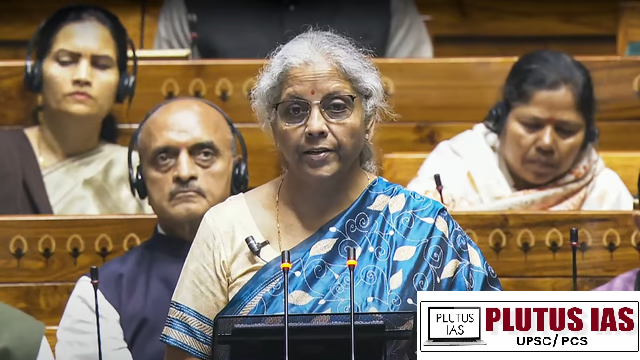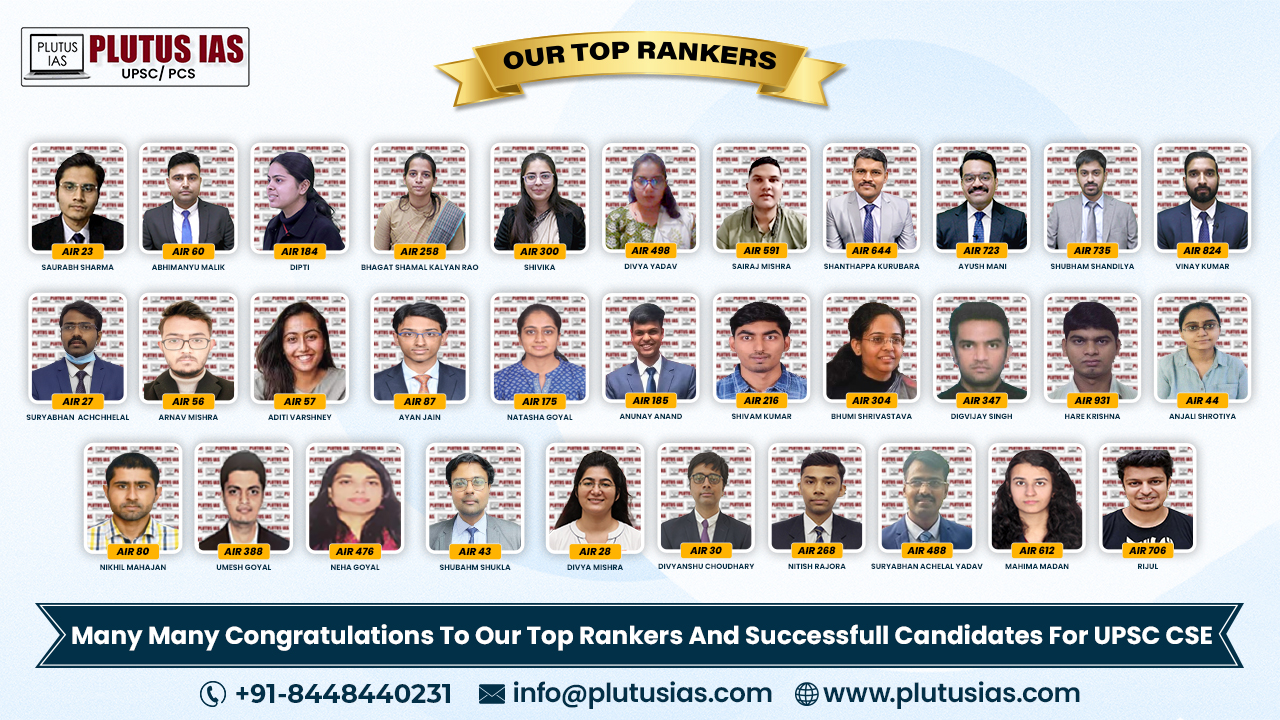05 Feb Driving Innovation and Growth: The National Manufacturing Mission
SYLLABUS MAPPING:
GS-3- Indian Economic-Driving Innovation and Growth: The National Manufacturing Mission
FOR PRELIMS
What is the National Manufacturing Mission? The new definitions of MSME and key facts of the Manufacturing sector.
FOR MAINS
Why in the news?
The announcement of the National Manufacturing Mission by the Union Minister for Finance and Corporate Affairs, Smt. Nirmala Sitharaman, in the Union Budget 2025-26, is in the news because it marks a significant step in promoting the “Make in India” initiative. The mission is aimed at supporting small, medium, and large industries with a focus on enhancing the manufacturing sector’s growth and efficiency. The mission has five main focal areas: improving the ease and cost of doing business, creating a future-ready workforce, boosting the MSME sector, providing access to advanced technologies, and ensuring the production of high-quality products. It will also push forward Clean Tech manufacturing, supporting industries like solar energy, electric vehicle (EV) batteries, wind turbines, and other sustainable technologies.

Manufacturing sector in India:
| Aspect | Details |
|---|---|
| Growth | The manufacturing sector’s output grew by 21.5% in 2022-23. The sector is projected to grow at 12-14% annually in the next 5 years. |
| Employment | The sector employs around 50 million people (approx.). Major industries include automotive, engineering, chemicals, pharmaceuticals, and consumer durables. |
| Foreign Investment | FDI equity inflows in the manufacturing sector grew by 23% in FY 2022-23, totalling $27.2 billion. India is the 5th largest recipient of FDI in the world. |
| Innovation | The government is promoting AI, robotics, and IoT with initiatives like Make in India and Digital India. Approximately $1.2 billion was invested in robotics in India in 2023 alone. |
| Sustainability | Around 50% of manufacturers in India are adopting sustainable practices. The sector is working towards achieving Net Zero emissions by 2050 under the National Action Plan on Climate Change (NAPCC). |
National Manufacturing Mission objectives and target :
1. Enhance Manufacturing Competitiveness: Streamline business processes and reduce regulatory burdens. Improve infrastructure to attract manufacturing investments.
2. Skill Development: Focus on training and upskilling the workforce. Prepare workers for modern manufacturing technologies and emerging sectors.
3. MSME Promotion: Provide dedicated support for small and medium enterprises (SMEs). Facilitate growth, innovation, and competitiveness of SMEs.
4. Technology Adoption: Promote research, development, and technology transfer. Encourage the adoption of advanced manufacturing technologies.
5. Quality Improvement: Promote quality standards and certifications. Ensure global competitiveness of Indian manufactured goods.
Target Areas of Focus:
1. Clean Tech Manufacturing: Support sustainable technologies like solar PV cells, EV batteries, and wind turbines.
2. Defense Manufacturing: Increase domestic production of defence equipment for self-reliance.
3. Electronics Manufacturing: Foster a robust ecosystem for electronics production.
4. Pharmaceuticals and Medical Devices: Enhance domestic manufacturing capabilities in the healthcare sector.
5. Textile Manufacturing: Boost domestic production of textiles and garments with a focus on innovation, sustainability, and exports.
6. Automobile Manufacturing: Strengthen the automotive sector, focusing on electric vehicles (EVs), component manufacturing, and increasing production capacity.
7. Heavy Machinery and Equipment: Support the growth of industries manufacturing heavy machinery, equipment, and tools for infrastructure development and industrial use.
National Manufacturing Mission significance:
1. Economic Growth: By boosting the manufacturing sector’s contribution to the GDP, the mission stimulates economic development, creating a more resilient economy.
2. Job Creation: It generates millions of jobs, especially for skilled labour, thus addressing unemployment and promoting socio-economic stability.
3. Technological Innovation: The mission fosters the adoption of cutting-edge technologies, encouraging research, development, and innovation within manufacturing.
4. Export Competitiveness: The mission enhances India’s export potential, helping to balance trade deficits and strengthening global economic ties.
5. Infrastructure Development: Manufacturing growth requires enhanced infrastructure, such as industrial hubs, logistics networks, and transportation corridors.
6. Skill Development: Focuses on upskilling and reskilling the workforce to meet the evolving demands of modern manufacturing.
7. Sectoral Growth: The mission targets key sectors such as clean tech, defence, electronics, and pharmaceuticals, fostering the development of critical industries that are vital for economic self-reliance and innovation.
Manufacturing sector issues:
| Issue | Description |
|---|---|
| Supply Chain Disruptions | |
| Natural Disasters | Events like floods, earthquakes, and hurricanes cause delays, interruptions, and damage to production. |
| Geopolitical Tensions | Trade conflicts, tariffs, and political shifts disrupt global supply chains and markets. |
| COVID-19 Pandemic | The pandemic led to widespread disruptions, causing shortages and delays in raw materials and products. |
| Labour Shortages | |
| Filling Job Openings | Difficulty in filling job vacancies and incredibly skilled roles due to a lack of workers entering the sector. |
| Automation and Robotics | While automation fills some gaps, human labour is still needed for maintenance and oversight. |
| Sustainability Pressures | |
| Environmental Regulations | Stricter regulations and consumer demand push manufacturers to adopt more sustainable production methods. |
| Consumer Expectations | Growing demand for eco-friendly and sustainably produced goods. |
| Cybersecurity Risks | |
| Cyberattacks | Cyberattacks can disrupt production, steal sensitive data, and damage equipment, causing financial and reputational harm. |
| Technological Adaptation | |
| Keeping up with Technological Advancements | Manufacturers need to adapt to AI, automation, and IoT to remain competitive. |
| Digital Transformation | Embracing digital tools like smart factories and data analytics to improve efficiency and reduce costs. |
Way to make National Manufacturing Mission A Game changer:
1. National Policy and Incentives: Develop a National Robotics Strategy with clear goals and funding mechanisms. Offer tax benefits and subsidies for companies investing in robotics.
2. Research and Development: Support research institutions and startups to develop cost-effective, tailored robotic solutions. Focus on advanced robotics like cobots and autonomous navigation.
3. Skill Development: Establish training programs for robotics operation, programming, and maintenance. Partner with educational institutions to integrate robotics education into engineering curricula.
4. Industry-Specific Implementation: Prioritize sectors like automotive, electronics, pharmaceuticals, and food processing.
5. Collaboration and Partnerships: Encourage global partnerships for technology transfer and expertise. Facilitate collaboration among research institutions, industry players, and government agencies.
6. Technological Advancements: Integrate AI and machine learning for adaptive learning and complex task execution.
Download Plutus IAS Current Affairs (Eng) 05th Feb 2025
Conclusion:
The National Manufacturing Mission announced in the Union Budget 2025-26 is a pivotal initiative aimed at transforming India’s manufacturing sector. By addressing key areas such as improving ease of doing business, fostering innovation, supporting MSMEs, and adopting advanced technologies, the mission strives to make India a global manufacturing hub. Focus on clean tech, defence, electronics, and other critical sectors aligns with the goal of enhancing economic self-reliance, job creation, technological advancement, and export competitiveness. For this mission to be a game changer, strategic integration of automation, AI, robotics, and skill development will be crucial in ensuring India’s manufacturing sector is future-ready and competitive on the global stage.
Prelims Questions:
Q. Which of the following statements are correct about the National Manufacturing Mission?
1. The mission aims to promote the growth of both small and large industries in India.
2. It focuses only on the development of the clean tech sector.
3. One of its goals is to enhance the competitiveness of Indian manufactured goods in the global market.
Select the correct answer using the code given below:
A. 1 and 2 only
B. 2 and 3 only
C. 1 and 3 only
D. 1, 2 and 3
Answer: C
Mains Questions:
(250 words, 15 marks)




No Comments